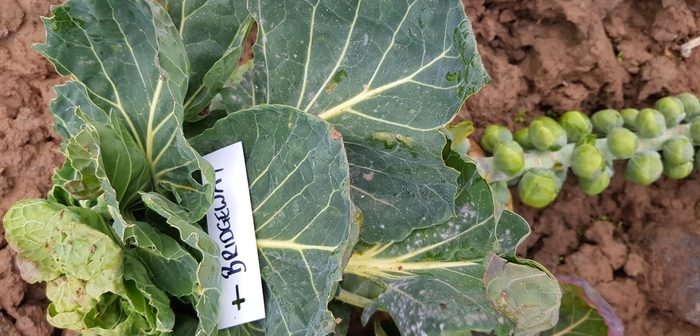With the dry spell starting to raise questions over whether a drought may be on the horizon, optimising biostimulant products can help vegetable growers prepare for any potential stress ahead, according to adjuvant and biostimulant experts, Interagro.
Though it seems not long ago that the UK was burdened with continued rain and flooding, rising temperatures over the recent weeks and lack of precipitation is starting to cause concern for some in the vegetable sector. “So far, it’s a been a fairly normal cropping year, but it will be a big problem if we do get a drought,” says Keith Brand, agronomist at Hutchinsons.
To prepare for what may lie ahead, Keith recommends the use of biostimulant products to boost crop health – specifically, the Interagro product, Bridgeway. “I’ve seen noticeable benefits to vegetable performance as a result of using Bridgeway, and with its proven effects in stress situations, it will come into its own if we have a drought.”
Licensed for use on an array of both non-organic and organic vegetable crops, Bridgeway is an amino acid biostimulant designed to help crops reach their genetic yield potential and reduce the impact of abiotic stress by improving plant health.
According to Interagro’s technical manager, Stuart Sutherland, feeding a crop Bridgeway guarantees the supply of amino acids for building protein, which is critical for plant health. “Under ideal conditions, plants synthesise all 18 L-amino acids, using carbon and oxygen in the air, hydrogen from water and nitrogen from the soil. This is what makes soil quality and nutrient density so important to overall plant health.
“Where conditions are poor, these raw materials can leach away in the soil or in dry soils, can become inaccessible to the plant. When crops don’t get what they need from their environment, we believe working with biostimulants is the best way to break the cycle. A biostimulant acts like a supplement until the crop can start production again making them crucial stress-busting tools.”
“The proof is in the pudding with Bridgeway, and in demonstration trials carried out in 2018 at the Allium and Brassica Centre, Bridgeway-treated Brussel sprout crops produced an extra 11.8t/ha compared with an untreated plot”, adds Stuart.
“Similarly, in research carried out on Bridgeway’s efficacy in onions, yield increased at every timing (compared with untreated crops) and showed that targeting onions at three spray timings delivered the biggest benefit. In terms of yield, this led to a 7.3t/ha advantage over untreated crops.”
James Rome, agronomist at East of Scotland Growers has also seen the benefits of Bridgeway first-hand. “I first started using Bridgeway last year, initially to help combat plant stress, and where we used it, we saw a significant improvement to crop health.”
James first utilised the product in a field of cauliflower on light land that had become very dry – meaning the crop was showing significant signs of stress. “While we didn’t measure yield, we did see a significant visual improvement in the cauliflower. It was much greener and definitely less stressed.”
With specific clubroot pressures in the area, Bridgeway has also proved to be effective in putting life back into struggling crops, he adds. “I used Bridgeway in conjunction with fulvic acid on a field of broccoli that was heavily impacted by clubroot and together, the two products saved the crop.
“Before we applied it, despite it being fairly early in the crop growth stage, the field wasn’t going to make a viable yield. With nothing to lose, we applied a fairly heavy dose of Bridgeway (5l/ha) and it helped turn the crop into something that was economically viable.”
Though James has predominately used a reactive approach when it comes to applying Bridgeway, he’s also seen benefits when it’s been used as a preventative measure too. “As a bit of trial, I tried drenching broccoli modules with Bridgeway, in a broccoli following carrots situation.
“Traditionally, the grower treats his modules with a general trace element mix, so we applied that to the whole field, except a small 0.5ha trial plot that was treated with Bridgeway.”
James applied approximately 1l of Bridgeway across about 25,000 plants and says there was a noticeable benefit to the Bridgeway-treated broccoli. “These improvements included better establishment and a slightly bigger plant, which ultimately has an impact on yield.”
With such an improvement to vegetable production, James is trialling the effects of drenching on modules again this year, though it’s too early to say how this will affect performance. “With disease issues and diminishing chemistry presenting as key challenges for vegetable growers, biostimulants are something that I think we’ll all be needing to utilise more.
“The issue is that there’s so many different products on the market that sorting the wheat from the chaff – so to speak – is difficult. But Bridgeway is certainly one that works for us.”




